Table of contents
Oat flakes without additives are probably the best-known oat product. Common oats ( Avena sativa ) are a very valuable grain due to their ingredients.
Use in the kitchen
How long do you have to soak oat flakes? Oat flakes (uncooked) are the basis of many mueslis (including Bircher muesli) for breakfast, less often for dinner. You can soak the flakes overnight in drinking water or pour milk alternatives or freshly squeezed orange juice (as in Erb muesli ) over them, leave to stand for a short time and eat them cold. Soaking oat flakes is usually not necessary. However, it is not enjoyable to eat dry oat flakes - without liquid or anything else. You should also not eat oats raw.
To cook oatmeal or not? Oatmeal porridge traditionally consists of oatmeal cooked in milk or milk alternatives. Milk alternatives include oat drink, rice drink, almond drink or soy drink, popularly known as oat milk , rice milk , almond milk or soy milk . In Germany, this porridge is often eaten sweetened. In Scandinavia, oatmeal porridge cooked with water, salted or lightly sweetened is known as Havregrøt . If you bake oatmeal with honey and nuts, it is called granola. Oat gruel is the strained gruel cooked from oatmeal. This is often given to babies or sick people as it hardly puts any strain on the digestive system and is nevertheless strengthening.
Oatmeal is not only delicious for breakfast, you can also use it to create savory dishes. Patties or patties (with potatoes or vegetables and oatmeal) taste great from the oven or the pan. For dessert, you can bake delicious cookies, waffles, muffins, donuts or chocolates. Oat flour is less suitable for baking bread because it does not contain gluten, but oatmeal or a portion of oat flour mixed into scones (small bread rolls) gives it a special taste.
The combination with a lot of sugar and fat can also make oatmeal unhealthy. Therefore, make sure that your diet is low in sugar, fat and salt.
Vegan recipe for porridge
Ingredients for 4 people : For the basic recipe you need 200 g of whole grain oat flakes (organic quality), 600 ml of water , 1 pinch of salt and 150 ml of plant-based drink - oat milk and almond milk are well suited.
Preparation : Bring the oat flakes to the boil with water and salt in a large saucepan. Once boiling, reduce the heat, let the mixture simmer for 5-10 minutes and stir regularly. When the oat flakes swell and have a creamy consistency, the porridge is ready to eat. Remove the pan from the heat, stir in the almond milk and season the porridge as desired (e.g. with cinnamon, vanilla or turmeric), sweeten (with maple syrup , agave syrup or chopped dates ) and garnish. Ideas for garnish: banana slices , all kinds of fruit, fresh (or thawed) berries, nuts, seeds or pumpkin puree.
With us you can try the following recipes: Oat dessert balls made from pomace (e.g. carrots) , Lemon Poppy Seed Porridge with oat flakes and lemon , Raw Sunday rolls with almond pomace and linseed , Fruit balls with raisins, nuts and oat flakes .
You can also find vegan recipes with oatmeal under the note: "Recipes that have the most of this ingredient".
| Not only vegans or vegetarians should read this: Vegans often eat unhealthily. Avoidable nutritional mistakes . |
Purchasing - Storage
Are raw oat flakes heated? Yes, oat flakes are heated (dried) and not raw . The heating is done to increase the shelf life of oats (grain and flakes). You can only eat truly raw oat flakes in the form of pre-germinated oat flakes or as raw oats from naked oats that you squeeze yourself. The Donath mill confirmed to us that their "sprouted grain oats" are their own variety of the Avena nuda species. The germination process makes the oat flakes more digestible and increases the bioavailability of their valuable ingredients.
When buying, you have to differentiate between normal seed oats ( Avena sativa ) and naked oats ( Avena nuda ). Naked oats are only loosely covered with husks and no dehusking process is necessary. They are a little harder to get hold of because they are more susceptible to fungal diseases and produce smaller yields. The husks of real oats ( Avena sativa ) hold up very well. Real oats are therefore dehusked using complex processes, which we describe a little further down in the chapter "Industrial production".
Can you eat raw oat flakes? Yes, in principle you can eat raw oat flakes, but buying unheated raw oat flakes is difficult. You will find them less in normal supermarkets or at major retailers such as Coop , Migros , Denner , Volg , Spar , Aldi , Lidl , Rewe , Edeka , Hofer , Billa etc. But you can buy raw, germinated and gently crushed oat flakes in selected organic shops, organic supermarkets ( Denn's Biomarkt ), health food stores or online. The term "gentle production" does not necessarily mean that the temperature was kept below 42 °C.
Or you can buy whole oats and crush them into flakes yourself - look for the label naked oats or sprouted grain oats. In organic shops, naked oats can also be found under the label "germinating oats" or "raw food quality oats". Unpackaged shops may also offer them. "Unhulled", on the other hand, can also mean seed oats, but these are then inedible with husks. Packaging that only says "oats" almost always contains peeled seed oats and these are very rarely raw. Only some supermarkets also offer organic oats in whole grains (e.g. from Alnatura at Migros - CH; Billa , dm - AT). At Rewe (D) you can also get naked oats in organic quality. In online shops you can of course find organically produced seed oats and naked oats. Prefer organic, regional oats. Crush organic oats yourself to make organic oat flakes. In 2015, Ökotest found pesticides, glyphosate and mineral oil in every second sample of conventional oat flakes used. 1
There are the following types of oat flakes:
- Oat flakes (large leaf flakes) : made from whole oat kernels, so they are whole grain. They are firm to the bite and swell the slowest when soaked and boiled.
- Delicate flakes (small leaf flakes) : are rolled from finely chopped oat kernels (oat groats) and swell up more quickly. They are also made from the whole grain, i.e. with outer layers and germ.
- Instantly soluble flakes : rolled from oat flour. They are made for infant nutrition and for diets. The flakes dissolve immediately when stirred into liquid and can be drunk without chewing.
The availability of oat flakes varies depending on the size of the store, catchment area, etc. If you are interested, click on our recorded food prices for the DA-CH countries (above under the ingredient image). There you will find current prices from various supermarkets and their price development.
Storage tips
Store purchased oat flakes in a dry, dark place. It is best to put the oat flakes in an airtight container. The heating increases their shelf life considerably. However, squashed oat flakes made from sproutable oats or naked oats do not last very long, which is why fresh preparation is recommended. If the shell is destroyed, the squashed grains can take on a rancid smell after a few weeks because they contain a lot of unsaturated, healthy fatty acids. Our test showed that whole naked oats can be kept for more than a year if stored dry and in an airtight container without tasting bitter or rancid.
Ingredients - Nutritional values - Calories
Oat flakes have a nutritional value of 371 kcal/100g. Compared to other types of grain commonly grown in Central Europe, oats are a very nutrient-rich grain. The protein they contain (13%) is largely made up of essential amino acids and the high fat (7%) and carbohydrate (69%) content provides a lot of energy. 2 Oat protein is nutritionally more important than wheat protein. 3
Oat flakes contain high amounts of manganese (3.6 mg/100g), as 100g cover 182% of the daily requirement. Walnuts have a similarly high proportion and unpeeled hemp seeds exceed this value even more with 7.6 mg/100g (380% of the daily requirement). 2
The element phosphorus is also present in high quantities at 410 mg/100g (59% of the daily requirement) and is comparable to green spelt .Pumpkin seeds have even more at 1233 mg and 100 g cover 176% of the daily requirement. 2
In addition to magnesium , potassium , calcium and zinc, oat flakes also contain significant amounts of iron . 100 g contain 4.2 mg and this covers 30% of the requirement. Rice flakes have a similar amount of iron and wholemeal spelt flour has more than twice as much at 9.7 mg/100g. 2 If you combine a plant-based iron source with vitamin C, you can increase the absorption of iron from oats, for example, as ascorbic acid enables a reduction of Fe 3+ to Fe 2+ , which the blood cells absorb in this form. 4
Other ingredients of oats are vitamins such as thiamine (vitamin B 1 ), folate (folic acid), pantothenic acid (B 5 ), riboflavin (B 2 ) etc. 2
In addition, oats contain many secondary plant substances (such as flavonoids, saponins). β-glucan, a soluble fiber, is contained in oats at 2-6%. 5
The complete ingredients of oat flakes, the coverage of the daily requirement and comparison values with other ingredients can be found in our nutrient tables. In the article Nutrients explained you will get a detailed insight into the topic.
Effects on health
Why are oat flakes so healthy? Oat flakes are a healthy and inexpensive food and a superfood not only for athletes. Oat flakes are a good source of fiber, contain valuable proteins (amino acids) and also polyphenols, which strengthen the immune system and regulate inflammatory reactions. 6
β-glucans (beta-glucans) are unbranched polysaccharides and are soluble dietary fibers. These beta-glucans are found primarily in the outer layer of the endosperm (aleurone and subaleurone layer). In oats, they make up two thirds of the soluble dietary fiber. The chemical and physical properties of these beta-glucans have a positive effect on cholesterol and blood sugar levels. Beta-glucans bind bile acid, which leads to the excretion of cholesterol and thus lowers total and LDL cholesterol. 5
Are oat flakes good for diabetics? There are some studies that show positive effects of the beta-glucan contained in oats on blood sugar levels. However, such studies usually use purified beta-glucans or oat products that are heavily enriched with them, which is why it is not certain that the results can be transferred to commercial foods. 7 Beta-glucans are therefore often the subject of research in the fight against diabetes and they can also be useful for cardiovascular risks. However, the structure and effect of beta-glucans depend largely on the source material. 8 Scientific studies show that a high fiber content in the diet reduces the risk of high blood pressure, lipid metabolism disorders and coronary heart disease. 9
Can you lose weight with oatmeal? The long-lasting feeling of satiety prevents cravings. If you include wholegrain oatmeal in your daily diet (e.g. 50-100g), you can definitely achieve weight loss success over a longer period of time (at least 1 year). 11
The phytic acid contained in many types of grain often has a negative reputation. This is because phytic acid binds minerals such as iron, zinc, calcium and magnesium in the stomach and intestines. (The absorption of copper is not affected). These are then no longer fully available to us. By delaying the breakdown of starch in the body, phytic acid also regulates blood sugar levels. Oats have between 0.42 and 1.16 g phytic acid/100g. 6 Should you soak oat flakes? Read more about this in the article Phytic acid or phytate and soaking or sprouting .
Antioxidants contained in oatmeal can lower blood pressure and counteract inflammation and itching on the skin. 12 In addition, the risk of asthma is said to be reduced if oatmeal is introduced into children's diets at an early age. 13
Dangers - Intolerances - Side effects
Oat flakes are actually gluten-free. However, the oat flakes made from seed oats that are commonly sold in stores are usually contaminated with other gluten-containing grains such as wheat, barley , spelt or rye . Conventional oat products are therefore unsuitable for people with celiac disease. Gluten-free oats ("gf oats") in particular have a gluten content of less than 20 ppm and bear the "gluten-free symbol", a crossed-out ear of corn in a circle. 14
People with celiac disease can also cope well with small amounts of oats. This has been shown by various studies. For many allergy sufferers and those affected by celiac disease, only gliadin is problematic, but not all other gluten (e.g. avenin and avenin in oats). Therefore, when buying oats, sufferers should pay attention to the oat products that are declared "gluten-free". Some people cannot tolerate gluten-free oats either: this should be tried out and found out in the company of a doctor. 15
Folk medicine - natural healing
Oatmeal is a proven home remedy for gastrointestinal problems. In the case of constipation, oatmeal or oat bran in combination with sufficient liquid helps to relieve the symptoms. Older people in particular swear by the easily digestible oatmeal as porridge (with water or milk). We often hear the question: Do you have to cook oatmeal? - which we can answer in the negative. Oatmeal is healthy raw or cooked.
Ecological footprint - animal welfare
In Switzerland, oat imports in 2002 were >70%, which means that the country's internal footprint in the field of arable farming is very low at 2% compared to wheat at 21%. The share of wheat imports in the statistics available to us is just over 40%. The most important importing countries are France, Germany and Italy. 16
A somewhat more recent study (the figures are from 2019) on the life cycle assessment from Germany shows that oat flakes have an ecological CO 2 footprint of 0.6 kg CO 2 eq./kg of food. Spelt is given as 0.7 kg CO 2 eq./kg. 17 The amount of water required to produce 1 kg of oat flakes is 2416 liters, which is similar to that for the production of rice flakes (2230 liters). 25 A study compared the environmental impacts of organic and conventional oat production in western Canada and could not identify a clear favorite for one type of cultivation. Although organic farming does not use synthetic pesticides and fertilizers, this saving is offset by the use of organic fertilizers and their transport and the emissions produced. 24 Nevertheless, it can be said that the pesticides used in conventional agriculture have a strong negative impact on important pollinators such as wild bees and honey bees. For example, the nesting frequency of wild bees, the growth of bumblebee colonies 26 or the overwintering rate of honey and wild bees decreases after exposure to pesticides or pesticide-contaminated plants. 27
Since the use of oats is often associated with oat milk , it is worth mentioning that the CO 2 emissions for this are significantly lower than for rice milk , for example. The cultivation of oats also requires significantly less water than for almonds or rice . Land use is slightly higher for oats than for soy , almonds or rice. 18
Worldwide occurrence - cultivation
The earliest evidence of oats being cultivated in Central Europe is in Switzerland during the Bronze Age. It was not until the 19th century that potatoes and wheat replaced oats as a staple food. Today , Russia, Canada, Australia, Poland and Spain are the world's five largest producers of oats. According to Wikipedia, Germany is in 14th place, Austria in 31st place and Switzerland in 50th place.
Found in the wild
There are several known wild forms of oats. Dead oats ( Avena sativa ssp. sterilis ), also called pigeon oats, are native to southwest Asia. Wild oats or wind oats ( Avena sativa ssp. fatua ) grow throughout the Eurasian region and are an unpopular weed in oat fields because they cross with seed oats. It is believed that wild oats evolved from seed oats. 20
Cultivation - Harvest
As an annual summer grain, oats prefer a temperate climate with high rainfall rates. They have low soil requirements. Oats are also known as a "health crop" because many grain pests do not reproduce in them. They form their grains in a panicle with many branches, not in an ear like wheat.
Industrial production
Seed oats are only edible for humans after they have been shelled. After the golden yellow oat kernels have been harvested, the mill separates the coarse dirt, foreign grains, seeds and straw particles, and sieves and sorts the kernels according to size. The oat kernels are then "kilned" (dried) at around 90-100 °C. 23 To do this, the kernels are passed through hot pipes. The kilning process deactivates the fat-splitting enzymes and reduces the moisture content. This significantly reduces the risk of the kernels or other products (flakes) going rancid. For retailers, the better storage capacity and longer shelf life are also major advantages of this treatment. In addition, the heat treatment partially breaks down the oat starch contained in the oats, which makes the oats easier to digest for human digestion. But "drying" not only destroys the germination capacity of the oats 21 , but also causes the loss of valuable amino acids (e.g. lysine ). It is carried out on both conventional and organic products. The taste also changes: drying makes the oats taste nuttier. 10 Many manufacturers believe that oats taste bitter when unheated. However, this argument applies more to naked oats, which generally contain more bitter substances.
The heating process of the kiln also facilitates the dehulling of the oat grains during the underrunner dehulling process 23 (dehulling involves removing the outer shell, the husk of the grain). Seed oats are often treated with steam beforehand to make dehulling easier. 20
No prior drying is necessary for dehulling in a centrifugal huller. The oat kernels are thrown onto an impact ring, which separates the husks from the grain. The oat kernels remain with all their components such as the endosperm, outer layers and germ. The lighter husks are sucked off using a blower. Only then does the drying process begin. 23 Before making oat flakes, the oats must be steamed with hot steam to improve elasticity. After rolling, the flakes are dried again. 22,23,10
Further information
Oat flakes are usually made from seed oats ( Avena sativa ), less often from naked oats ( Avena nuda ). Both belong to the oat genus ( Avena ) and are sweet grasses. Seed oats are grown as a grain and are colloquially called simply "oats". The approximately 25 Avena species are distributed from northwest Africa and Spain through the Mediterranean to the Middle East.
You can also make your own oat drink from oat flakes or oat flour: This cow's milk substitute is ideal for people who suffer from lactose intolerance or who want to eat a vegan diet.
Alternative names
Oatmeal is often referred to as oat, rolled oats or oatmeal. The well-known porridge, which comes from Scotland, is also known as overnight oats.
For the sake of simplicity, when referring to oats, we always write about Avena sativa as seed oats or real oats. However, it is also known as cultivated oats, spelt oats or edible oats. Avena nuda is naked oats or sprouted grain oats.
Bibliography - 16 Sources
| 1. | Zentrum-der-Gesundheit.de Qualität von Hafer erkennen. |
| 2. | Ökotest.de Haferflocken im Test. 2015. |
| 3. | Wikipedia Haferflocken. |
| 4. | Wikipedia Flughafer. |
| 5. | Alleskoerner.de Hafer Verarbeitung. |
| 6. | Einfach-clever-essen.de Vom Haferkorn zur Haferflocke. |
| 7. | Demeter.de Hafer. |
| 8. | USDA United States Department of Agriculture. |
| 9. | Wikipedia Saat-Hafer. |
| 10. | Ernährungs-umschau.de Beta-Glucan aus Hafer. |
| 11. | Daou C, Zhang H. Oat Beta‐Glucan: Its Role in Health Promotion and Prevention of Diseases. Online Library. 2012. doi:10.1111/ j1541-4337.2012.00189.x |
| 12. | Schmandke H. Blutglucose- und -lipidsenkende Wirkung von Phytinsäure. Ernährungs Umschau. 2007;5. |
| 13. | Sur R, Nigam A, Grote D, et al. Avenanthramides, polyphenols from oats, exhibit anti-inflammatory, and anti-itch activity. PubMed Arch Dermatol Res. 2008;300(10). DOI: 10.1007/ s00403-008-0858-x. |
| 14. | Fiocchi A, Assa'ad A, Bahna S, et al. Food allergy and the introduction of solid foods to infants: a consensus document. Adverse Reactions to Foods Committee, American College of Allergy, Asthma, and Immunology. PubMed Ann Allergy Asthma Immunol. 2006;97(1). |
| 15. | IG Zöliakie der Deutschen Schweiz. Hafer in der glutenfreien Ernährung. 2018. |
| 16. | Heiss, R. (Hrsg.). Lebensmitteltechnologie: Biotechnologische, chemische, mechanische und thermische Verfahren der Lebensmittelverarbeitung. Springer; 1996: 149ff. |

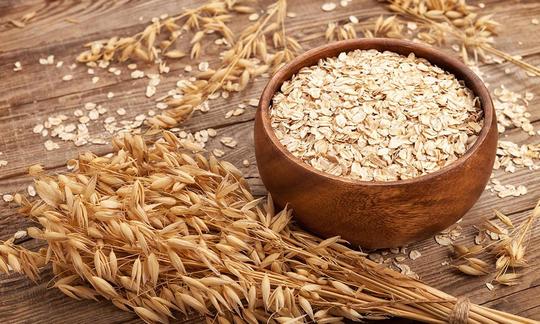

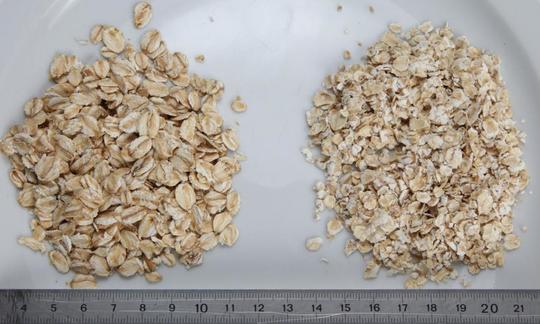

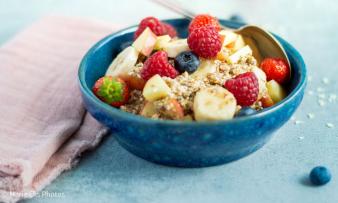
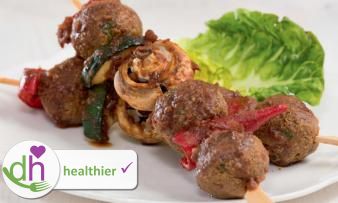
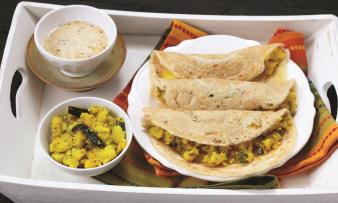


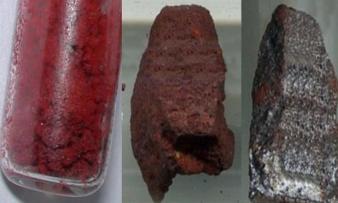


Comments